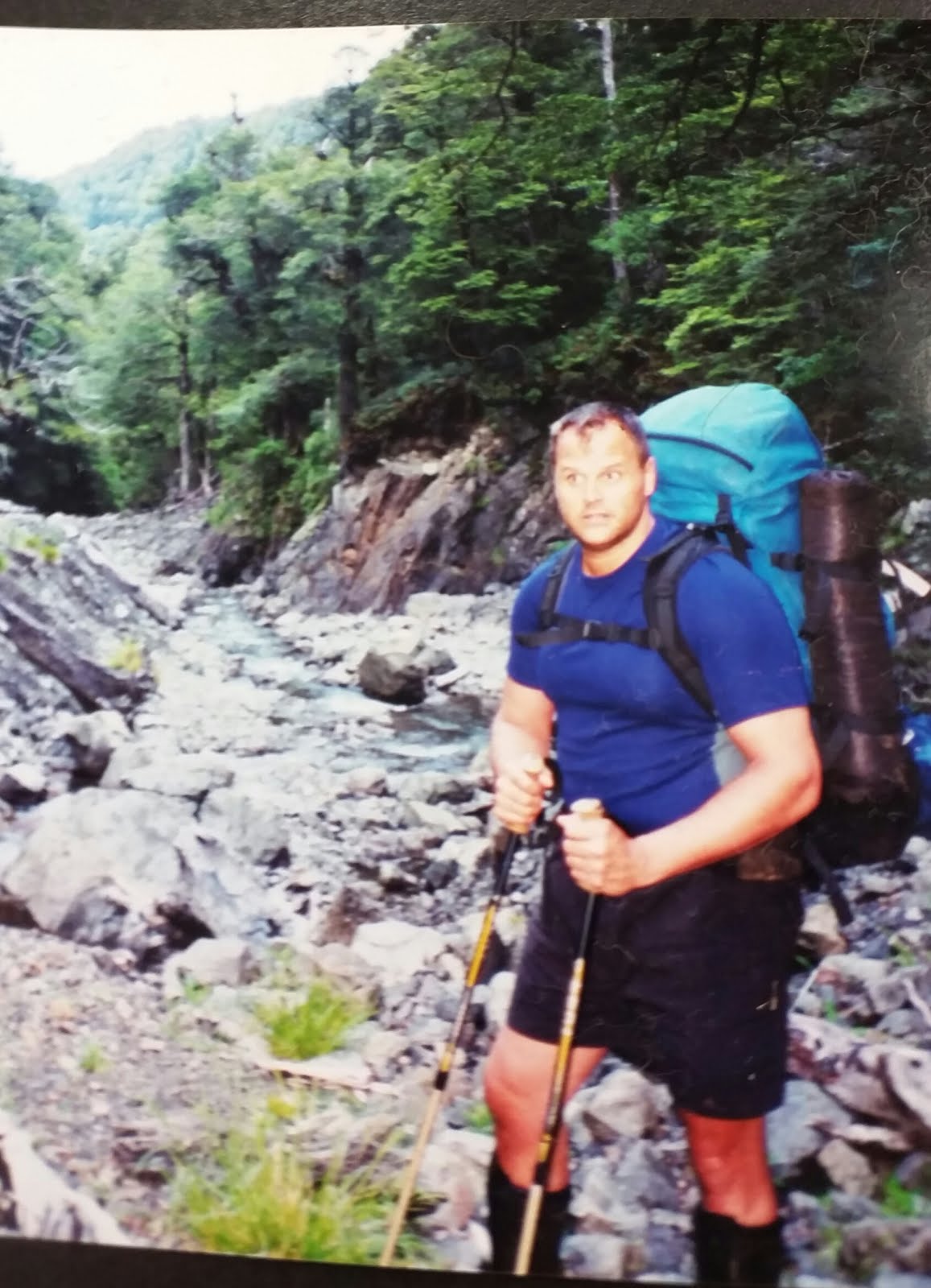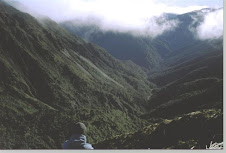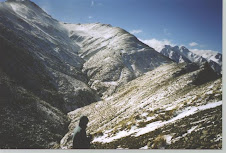Mataatua marae Waitangi weekend.
I am not real sure why I am even here, on a marae for the very first time in my 19 years of living as a manuhiri (guest) here in Aotearoa. I am with a group of young, mostly Maori students, all accomplished, all heading towards being leaders in their various disciplines, and led by even more accomplished Maori women. I know I am here because of my wife's friendship with one of those women, Erika, whom I also think of as my own friend, but if I am truly honest I have to write that if I had not come to share this experience, my relationship with Tara, my wahine and a talented woman in her own right, may have possibly come to an end. So conflicting emotions see me sitting here amongst all these accomplished folk. I am glad Charlie Kloss is here as well.
Later evening: I was surprised by how the lump in my throat grew as we were welcomed onto the marae with the Powhiri. It says that our ancestors as well as those here at the marae are here with us. I get that. Later on after our dinner I was wandering about the grounds and came upon a little non- descript shed in the back and in front were piled loads of wood, which I am always interested in. I walked over to the stack of old huge logs, thinking these are too massive to split here for firewood, when a quiet voice spoke from inside the shed and asked, "Are you a carver mate?". Of course I answered no, and the voice then invited me inside where I found Jay, one of the Maori men who had greeted us during the Powhiri. I was surrounded by carvings, wood and bone, and all ataahua (beautiful). Jay showed me all around and each piece, and upon the walls the pictures of all his prior generations who had been carvers. How he was the only one left in his family to pursue the skill, craft and patience required. How hard it is now, in South Auckland, to find anyone young in his whanau to teach as he had been taught by his elders. We were then joined by Marsh (who has a lovely Maori name I was unable to remember and will not denigrate by trying to do so), the kaumatua who gave the korero (talk) at our Powhiri. Marsh has a full Moko, or facial tattoo. As a Pakeha we are conditioned to see this as something fierce and intimidating, yet Marsh spoke in a lovely soft voice as he showed me his bone carvings and spoke of his experiences of working with youth in South Auckland. At one stage he asked who I was, why I had come to Aotearoa, and so on. Somehow that got to the Ruahine and the old tawhairauriki staff I had once found to aid Taylor in crossing a flooded river we were going to have to cross for a long time that day when he was only 8 years old. I still have it, (and it sits beside me as I write this now). Marsh said I was meant to find it and should send it to Jay to carve for me. I walked away from that tiny shed with another lump in my throat.

The whanau I was with for the most amazing 5 days I have spent in Aotearoa.
Mataatua marae early morning. I stayed behind when the others went to the Otara markets and such and had a chance to talk to Rangi, the Maori woman who really ran the marae. She patiently explained to me the whole meaning of the Powhiri, Tapu (Sacred), and Noa (Open), which after being welcomed onto the marae I am. Sitting with Rangi having a cup of tea was the the most incredible way to begin my day.
The wood and bone carving shed. Significant moments in humble places.
Kawiti marae. A most beautiful and peaceful place, yet has sheltered some of those most involved in real strife, hate, and fear beyond this graceful domain when no others would. No wonder shelter was both offered and accepted here in her bosom. The sleeping quarters in the foreground, the kitchen and dining area in back, and the ablutions block hidden behind. The cliffs behind are Tapu (Sacred) meaning no one is allowed amongst them. They remind me of mountains, or of Kura Tawhati in the south island. All places that exude spirit and mana.

A view a bit further back, just after we had arrived. You do not just bowl on into a marae, you have to announce your presence, be seen and acknowledged, then proceed to the Powhiri. Here Erika and Tara await before we gather for a karakia and proceed forward. The formality and significance of host to manuhiri (guest) is something we out here in our fast paced materialistic world have forgotten. Really it comes down to manners and respect, and an acknowledgement of the host and guest relationship.
Putting a wood stove in our own whare (house) was a very big thing for me. I love the whole process of gathering wood, preparing and building the fire and maintaining such a simple way to provide the whanau heat and comfort. This wood stove at Kawiti also provides the means to prepare food in those two big ovens on either side. In a way I saw it as the soul of the marae itself.

Waitangi Day: We are here to mark the signing of Te Tiriti o Waitangi, or the Treaty of Waitangi, which was signed in 1840. As a manuhiri I have always been vaguely aware that this was a significant day, and the way I understood it as put forth in the media was that it marked the birth of what is now New Zealand. Mostly it was a day off work, a chance to party a bit the night before and have a sleep in, or plan a tramp up into the hills and so on. For most Pakeha that would be a fair representation of the day. For a far larger proportion of Maori, Te Tiriti is a far more important document, a living breathing entity which represents what should be a way of life itself. So many Pakeha, media, corporations and business interests, and certainly our government see Te Tiriti as an old piece of outdated parchment that should simply be burned, as well as a hindrance to "progress", usually benefiting a small number at the top. I always find it interesting how the mainly white western world holds our own ancient documents so dear and closely to our bosoms, the Bible, the Magna Carta, the Declaration of Independence, the Constitution, and so on. Yet treaties signed with indigenous peoples of the world we saw, and still see, as being somehow invalid as quickly as they accomplish the short term purpose colonizers required, or simply an old outdated dead document. Well, I got news for such views, the biggest lesson I learned over the weekend is that Te Tiriti ain't going nowhere, and there are some fiercely brilliant Maori minds and bodies, and even a few Pakeha ones, who are in for the long haul. Mauri Ora!
The above photo is representative of another huge myth that was blown to bits, and another huge truth revealed for me. Every year before I came to Waitangi the spin put out by the government and media is that Waitangi Day is a volatile, explosive cauldron of Maori discontent. Radicals, terrorists, agitators, and separatists who harrass and threaten the government officials and others. The news papers and television show pushing and shoving, men with full faced Moko's filled with rage. This should be a day of celebration, not one of division is the common theme of the pakeha world. "We are all one". - No actually we are not, and I also learned that this day is no way a "celebration" for most Maori. It is in fact a very sad day, a day that highlights the fact that Te Tiriti is still being abused, neglected, and unobserved, that Maori continue to lead every possible negative statistic there is available. And we say, "well, we are all one, they have the same opportunities", "ferals", "warrior gene", "time to move on", ad nausea. What indeed is there to celebrate about the effects of colonization on an entire population of people whose land was stolen, whose language was nearly killed, and who are still being lied to about Te Tiriti o Waitangi?
The media puts out close up, panned in shots and film of angry protesters to make it look as if riots are about to break out, and the impression that hundreds of people are about to run wild. That bubble was burst for me in the above photo. Charlie and I were standing near where John Key and his entourage were being escorted off the marae. There was a small group yelling abuse and protesting, and there should be in my view, but in the media it was made to look as if he was in danger, that the kettle was about to boil over. Have a look. Do you think I would let my 9 year old son stand near what I thought would be a threatening situation? Does it look dangerous and out of control? I was there, and it wasn't. And the same applies to the next day's Hikoi to the Waitangi flagpole where again it was potrayed as a near riot, and the same type photo of an angry Maori man of twisted face and hatred. Had the camera panned a mere few feet away, they would have seen Charlie and I standing peacefully as so many others carried on a respectful and dignified korero. Never again will I believe our media and government. I will source my information elsewhere.

Charlie standing by Hone Harawira a few mere moments after Key and his dark suited entourage hustled off the marae. A bit later Tara, Charlie, and I were walking back towards the political tent and Charlie asked us, "Why do men in suits look so strange?" - there was a Maori woman walking behind us and she burst out laughing and said to Charlie, "Because they are all thieves! What a great question!" She continued down the road laughing.

Above is Tara with Meteria Turei, the leader of the Green Party, and Tara's cousin whom she had not seen in many years. The biggest benefit for me being such an unimportant part of the group I was with is that I was fortunate enough to listen to some amazing Maori voices put forth the real and true story of Te Tiriti and its on going relationship with all of us. People whom once again in our media, and by our government are portrayed as haters and wreckers, radicals and dividers, even a few as terrorists. To listen to these people speak, to listen to the passion, commitment, knowledge, and yes, Love, in their korero left me dazed, and honoured.

Tame Iti. To hear this man speak in such a quiet gentle manner, to feel emanating from him the hurt and pain of his journey, I actually had to look away at times. He did not talk of agendas of terror and plots HE may have put forth, as so commonly is put up by our media, he talked of what it is like to be sleeping peacefully in your own whare and have our own government terrorists break his doors down and pull his partner, daughter, and himself outside and separate them. He talked of how it felt to see the red laser dots on his face and body, of being on the ground with a snarling German Shepard snapping viciously at his face mere inches away. That happened here folks. And five years later the government has still yet to bring all this to trial. Why is that?

Giving the korero is Mereana Pitman. Seated are Moana Jackson in the middle, and to the left is Veronica Tawhai (the leader and facilitator of our group). Three beautiful and amazing minds and visionaries whom opened up a whole new view for how I see certainly Te Tiriti, but also the whole world. And with others we listened to, Tame Iti, Mike Smith, Annette Sykes, Hone Harawira, Metiria Turei and others, the fight to put Te Tiriti in its rightful place is in good hands. Combined with people in our own whanau, Erika Te Hiwi, Natasha McCombe, as well as the young brilliant minds I met and observed in the young students who came with us, it all gives me inspiration to change myself, and hope to change the world.
Dawn over Waitangi from the Upper marae.
So here it is, because I know there may be a few peeps who read these words and still see the above names and my own views as radical and dangerous. So, to paraphrase a bit from the wonderful Moana Jackson, whom I could sit in front of and Listen to for days at a time, from now on this is what I will ask of any Pakeha, or anyone who wants to question the rightful place of Te Tiriti in Aotearoa.
Please ask yourself four questions.
1. Would the King of France have woken up one morning around 1840 and decided he would cede all power, because ultimately this is about power, to the King of England, and what would the people of France have thought about that?
2. Why would a combined Maori population of up to an estimated 500,000 in 1840 cede power to a group numbering around 2000 settlers and missionaries? They could have, and probably should have run them into the sea. What they were attempting to do was to bridge a way to allow these people to live here in a way that was similar to inter-connections the various Iwi shared amongst each other as the indigenous people, through the bonds of marriage and history, so that quite simply the manuhiri would abide by the rules and behave themselves. Hone Heke went directly to the source, to the King of England, to suss him out and get him to control his drunk, and out of control wild mob instead of the other option of simply running them into the sea. Te Tiriti was a way to let people stay here and yet still be guided by the principles of Tino Rangatiratanga. It is as simple as that.
3. Ask yourself what sort of world you want to live in, what sort of world you want your children, and your childrens children to live in and amongst? One can read most any post I have written on this blog to know how I personally feel about wild places, the earth, sea, and what we are doing to them. And now, having been on two marae over 4 days and living under the protection of Tino Rangatiratanga and how I was cared for, how I learned to pitch in and make it all happen, how much more aware of what is around us and how we treat one another, I have absolutely no issues at all with, again simply, a better way.
4. Have you actually ever been to Waitangi? If yes, I hope you feel a bit like I do, if no, I'll see you there.
The flagpole over Waitangi at dawn.
The real reason this is all so crucial and so important to get right.
"On life's eternal river
we float on....and
on, forever - like
a stream of light
enhancing our under-
standing of human love,
and life! Kia ora!
Hone Tuwhare
Kia ora to all the wonderful people I shared this experience with, and especially to those who put it all together and allowed me to be part of such an amazing chapter in my life.
Aroha,
Robb

























